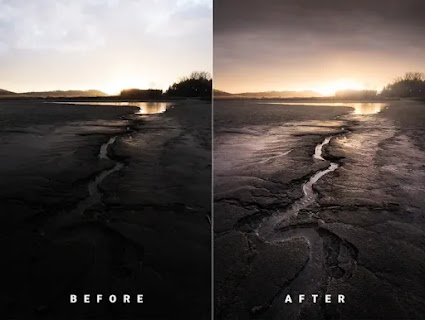Easy exposure editing: Art of simplicity
In a world filled with complex workflows and multi -level composites, the editing of individual exposure comes as a celebration of clarity and efficiency. This technique embraces simplicity by achieving professional quality results, making it a method of photographers and editors in the areas of architectural editing, editing of hotel photos and editing of commercial property.
Instead of combining multiple exposures, the editing of individual exposure uses good combustion of high quality as the basis. With accurate adjustment and a trained eye, the editor can increase the details, correct the lighting and create the images-out of the need for complex setup or expanded finishing.
What is the editing of individual exposure?
In the core, the editing of easy exposure involves capturing the same image and using finishing tools to accommodate the exposure, contrast, white balance, shade and highlights. Although it does not offer the dynamic spectrum of HDR editing, a single exposure when a single exposure provides all the necessary visual information - especially with good light and the correct composition can provide.
This editing style is often used in Resort Photo Editing, Property Editing and even commercial editing of high end, where time, stability and fast distribution are needed.
Efficiency in hotel and resort retching
Hotel trial and resort that repeats often requires high volume editing for rooms, lobby and external shoots. In these cases, the editing of single exposure is illuminated. This allows editors to process images quickly while maintaining high standards. Pure lighting, well -organized compositions and well -framed architecture can be extended subtle with contrast adjustment, color improvement and selective sharp.
In settings with controlled lever-like indoor shoots or external shoots in time, good-these methods are particularly effective. With a minimum distracted and simplified workflow, it reduces the editing time without compromising on quality.
Professionals result in real estate and architecture
In commercial architecture editing and architecture, where geometric accuracy and pure presentation are needed, enabled editing editing of easy exposure to correct perspective, adjust lines and focus on increasing the surface structure. This method works especially well for external shoots captured during the interior with golden hours or balanced lighting.
For the return of properties and high end repetaching of properties, easily exposure can be used to clean the mess, adjust the lighting and clean the Polish finish such as floor, countertop and window. As long as the original image is properly exposed, this technique provides elegant and attractive views.
When Simplicity Wins Over Complexity
Unlike HDR editing or flambient editing, which are perfect for complex lighting situations, single exposure editing excels in scenarios where lighting is even and intentional. It offers a cleaner, more natural look without the potential for ghosting or unnatural tonal shifts that can occur in multi-exposure blending.
This makes it ideal for projects with tight deadlines or for photographers who prefer a streamlined shooting and editing process. It’s also incredibly useful in virtual staging, where a clear, undistorted base image is essential for realistic results.
Enhancing with Manual Techniques
Even though it's built on one photo, single exposure editing still benefits from manual craftsmanship. Editors often apply manual blending within the image—selectively adjusting brightness and contrast across areas to simulate balanced lighting or add depth. Fine-tuning shadows and highlights, correcting chromatic aberration, and enhancing sharpness are all part of the workflow.
For hotel photo editing or commercial real estate editing, these subtle refinements can dramatically elevate the final output—without ever needing to combine exposures.
The Value of Simplicity in a Complex World
In an industry where visual quality is non-negotiable, single exposure editing proves that excellence doesn’t always require complexity. With the right exposure, lens, and timing, a single image can convey the essence of a space—be it a luxury hotel, a serene resort, or a high-end office building.
Whether used in architecture editing, resort retouching, or property editing, this approach offers a faster, cost-effective, and visually compelling alternative to more intensive methods. It’s a testament to the idea that sometimes, less truly is more.
Final Thoughts
Single exposure editing is not just about speed or simplicity—it’s about mastering the fundamentals of photography and post-production. By understanding light, composition, and the subtleties of tonal balance, editors can transform a single shot into a powerful visual asset.
In an era where authenticity and efficiency are prized, this technique continues to gain popularity across industries—from hotel photo editing to high end commercial editing. And while it may not replace HDR or flambient workflows in every scenario, it offers a refreshing reminder that simplicity, when done right, is a powerful form of artistry.

.png)

Comments
Post a Comment